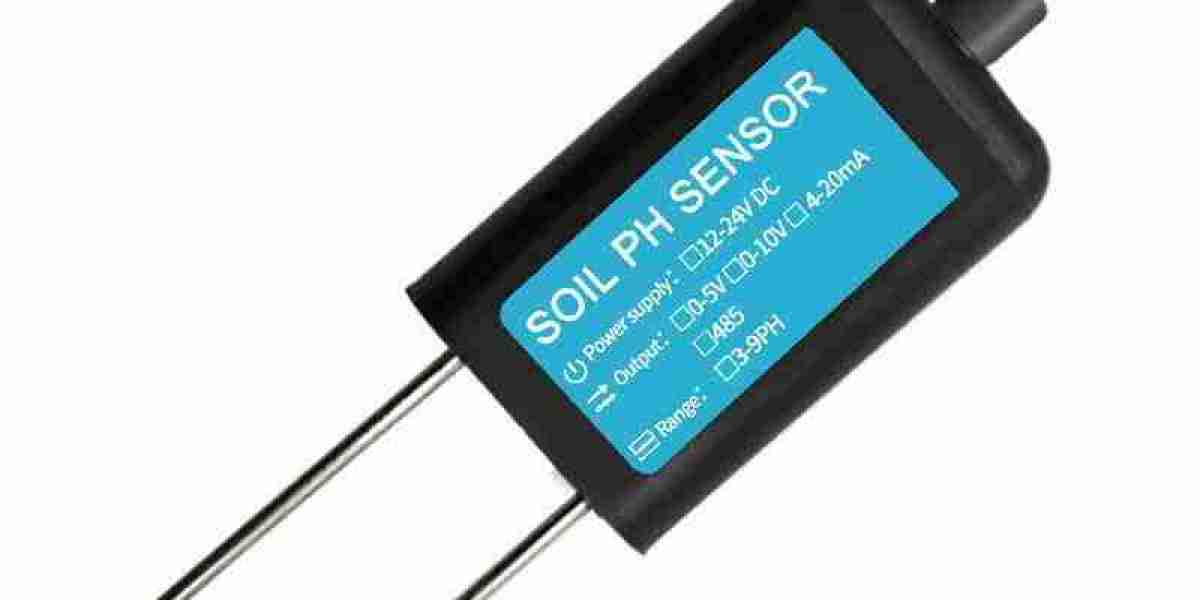Introduction:
Agriculture is a critical industry that feeds the world's population. However, farming practices can be inefficient and unsustainable, leading to soil degradation, resource depletion, and loss of crop productivity. Soil sensors are emerging as a valuable tool in enhancing crop management, optimizing resource use, and increasing agricultural productivity. In this article, we will explore how soil sensors work, their potential benefits, and how they can enhance crop management.

What are Soil Sensors?
Soil sensors are electronic devices that measure soil properties, such as moisture content, temperature, salinity, pH, and nutrients. Soil sensors can be installed in the soil or placed on the surface, depending on the type of measurement required. The sensors collect data continuously and transmit it wirelessly to a computer or mobile device for analysis and interpretation.
Benefits of Soil Sensors:
Improved Crop Yield: Soil sensors provide farmers with real-time information on soil moisture, nutrient levels, and other environmental variables that affect crop growth. With this information, farmers can optimize irrigation, fertilization, and other management practices, improving crop yield and quality.
Resource Efficiency: Soil sensors enable farmers to apply water and nutrients precisely where and when they are needed. This reduces water wastage, fertilizer runoff, and energy consumption, leading to cost savings and environmental benefits.
Reduced Risk: Soil sensors can help farmers identify potential issues, such as nutrient deficiencies, soil compaction, and pest outbreaks, before they cause significant damage. Early detection allows farmers to take corrective action promptly, reducing the risk of crop losses and economic losses.
Sustainable Agriculture: Soil sensors promote sustainable agriculture by enabling farmers to manage resources more efficiently, reduce waste, and minimize environmental impact. This leads to improved soil health, biodiversity, and long-term sustainability.
How Soil Sensors Enhance Crop Management:
Soil sensors offer numerous benefits to farmers, allowing them to manage crops more effectively and sustainably. Here are some ways soil sensors can enhance crop management:
Soil Moisture Monitoring: Soil sensors can measure soil moisture content at different depths, enabling farmers to determine when and how much to irrigate their crops. This leads to improved water use efficiency and reduced water wastage.
Nutrient Management: Soil sensors can measure nutrient levels in the soil, allowing farmers to apply fertilizers precisely where they are needed. This reduces fertilizer waste and runoff, leading to improved crop growth and reduced environmental impact.
Disease and Pest Management: Soil sensors can detect changes in soil temperature and humidity that may indicate the presence of pests or diseases. Early detection allows farmers to take preventive measures, reducing the need for pesticides and promoting sustainable pest management practices.
Climate Resilience: Soil sensors can help farmers adapt to changing climate conditions by providing real-time information on soil moisture, temperature, and other variables. This enables farmers to adjust their farming practices and reduce the risk of weather-related crop losses.
Challenges and Considerations:
While soil sensors offer numerous benefits, their adoption may face some challenges. High initial investment costs, technical expertise requirements, and data management challenges may pose barriers to implementation. Additionally, soil sensors require regular calibration and maintenance, which may require specialized training and support. Governments, research institutions, and private sector stakeholders need to collaborate to overcome these challenges and promote the widespread adoption of soil sensors.
Conclusion:
Soil sensors are an emerging technology that can enhance crop management, improve resource efficiency, reduce risk, and promote sustainable agriculture. They offer real-time information on soil properties, enabling farmers to optimize irrigation, fertilization, and pest control practices. By adopting soil sensors, farmers can improve crop yield and quality, reduce environmental impact, and build a more resilient agriculture sector. With the right technology, training, and support, soil sensors can transform the way we grow food and ensure a sustainable future for generations to come.







